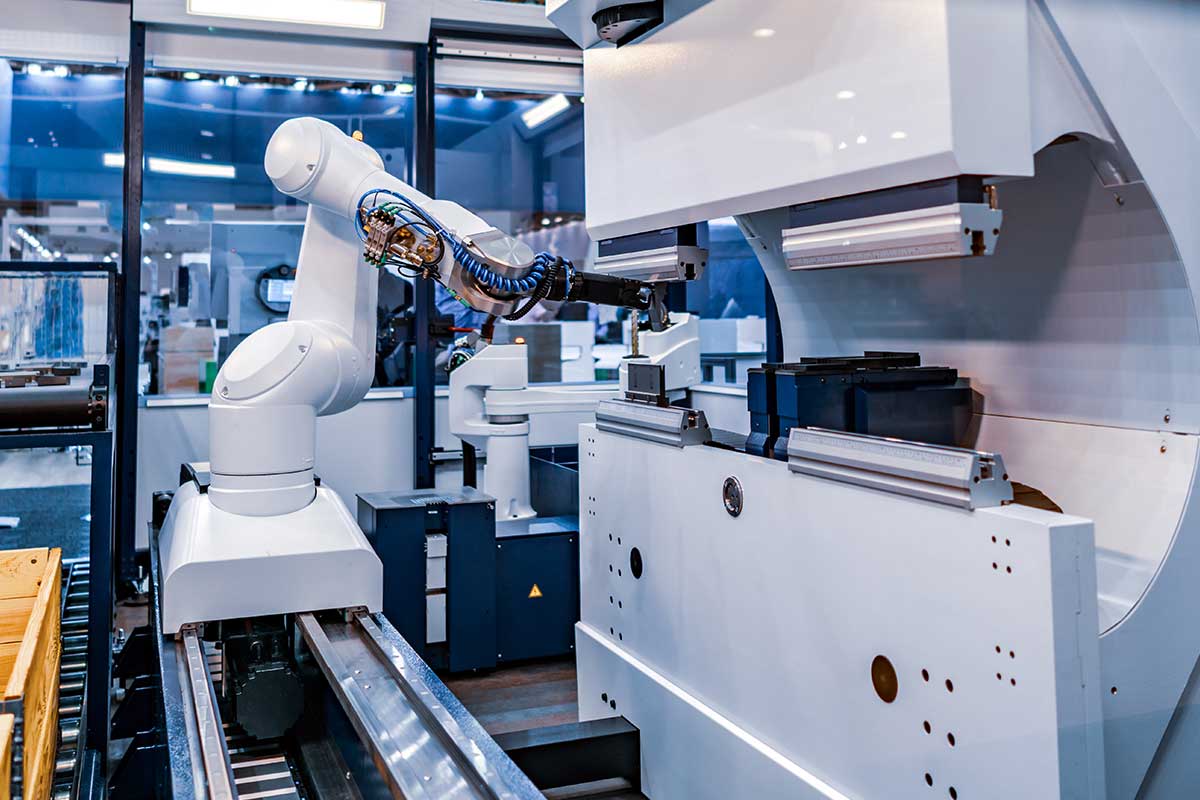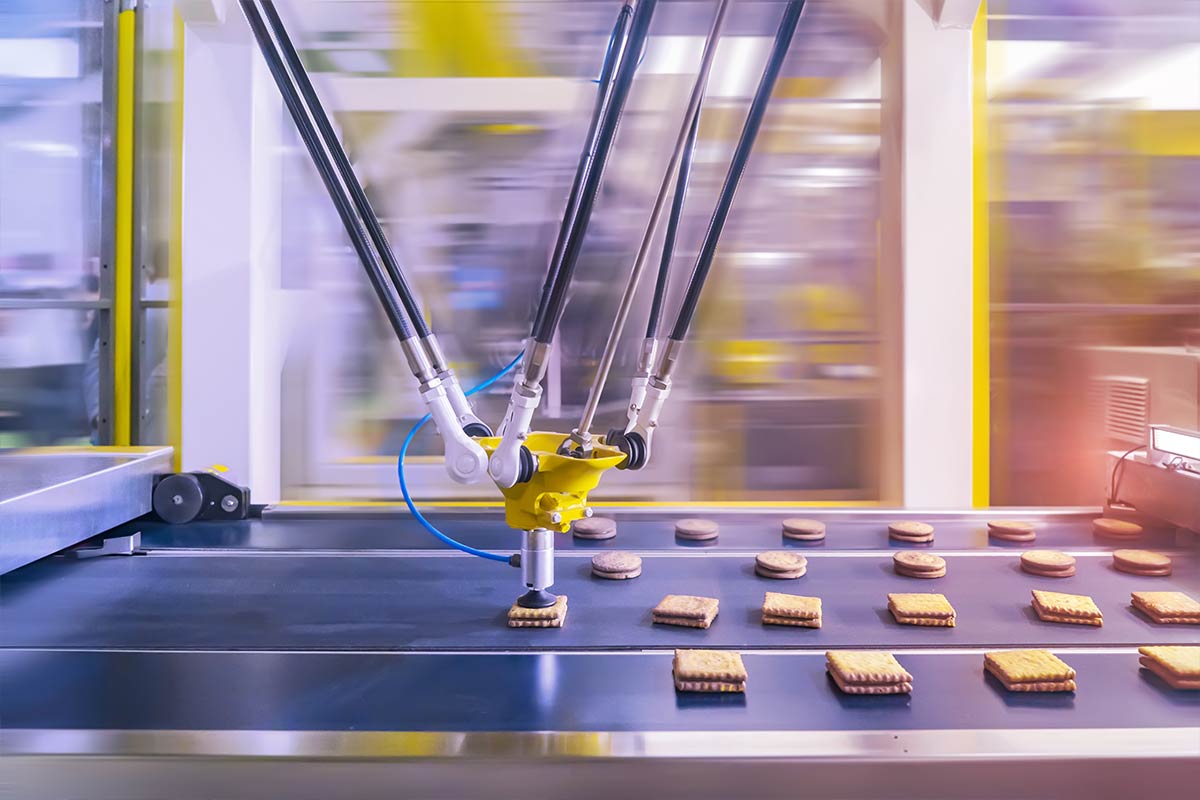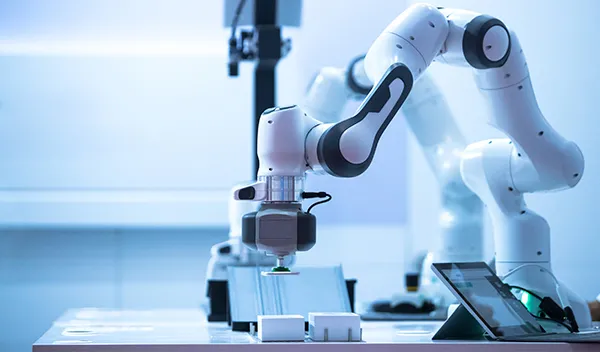Building Manufacturing Automation with Optimized Human-Robot Synergy
Coupling industrial automation and robotics with digitalization optimizes the factory floor and drives manufacturing resilience.
Manufacturing automation is inevitable. In fact, the market for industrial robotics has been increasing by double digits each year since 2012.
Robotics' rising popularity is due in part to virtual simulation technology's use in other aspects such as packaging design validation. Adopting simulation on the factory floor enables manufacturers to easily test various robot applications. At the same time, they can reduce the frequency and duration of human-centric engineering tasks.
Though robot utilization is becoming widespread in manufacturing today, the planning of these assets is not yet as optimal as it should be. By leveraging the virtual twin for simulation and other powerful capabilities on an integrated cloud platform, manufacturers can improve robotic efficiency and transform their businesses.
The Rising Value of Robotics in Manufacturing
Get our ebook to learn how manufacturers can accelerate manufacturing automation for human-robot collaboration that optimizes the factory floor.
Three Cornerstones of Manufacturing Automation
Industrial automation and robotics must be optimized today to enable tomorrow's smart factories. Optimal manufacturing automation can be achieved with an enhanced robotics strategy. To get started, manufacturers need to be guided by the following cornerstones:
1. Adopt new industrial technologies
Manufacturers can accelerate robotic innovations and their successful deployments by implementing:
- IIoT and 5G
- AI and machine learning
- Cloud platform
Industrial internet of things (IIoT) not only connects equipment, devices and products but also operations and processes. 5G, meanwhile, provides real-time connectivity with ultra-reliable low-latency and high throughput.
While IIoT enables the continuous link between machines, 5G provides fast and reliable connectivity. Together, the two technologies ensure that data transmission from sensors on robots can easily reach the rest of the factory.
The dynamic between artificial intelligence (AI) and machine learning plays a role in robotic efficiency and manufacturing automation.
AI enables manufacturers to gather and transform all types of big data. By aggregating big data for valuable insights on a cloud platform, manufacturers can automate processes more easily and effectively.
Machine learning, which thrives on AI efficacy, enables robots to learn from shared knowledge on the cloud, adapt to their work environments and teach themselves to perform tasks better.
With a cloud platform that offers virtual simulation, manufacturers can test industrial robot behavior in any virtual reality in manufacturing. This way, they can harmonize product and tool designs in a process, ensure efficient space use and optimize people-robot interaction.
Meanwhile, platforming robotics on the cloud helps manufacturers maximize flexibility and economies of scale in their automation strategies, integrate robots with other systems in their organizations easily and maintain digital continuity throughout their supply chain.
2. Explore new applications
Robots are widely used for manufacturing automation today. Still, there's potential deployment and growth in new operational areas:
Product assembly dexterity
The multi-axis arm movement technology enables robots to replicate human dexterity and handle product assembly – but better and faster.
Production flexibility
Robots utilized for modular production cells can be added or redeployed to scale production up or down in response to dynamic demand changes.
Mass customization
Utilizing robots helps retain the human touch in bespoke orders yet produce them at larger scales and reduce more sustainable costs.
Robots as a Service
The RaaS business model allows manufacturers the agility and flexibility to meet changing market conditions and client needs rapidly.
3. Embrace new adopters and industries
Robotics adoption enables manufacturers to reshape the global supply chain at continously reduced cost in two ways:

Easier adopton by SMEs
Today, small- and medium-sized manufacturers can move away from outsourcing and use robots to increase productivity, especially in countries with tax policies that incentivize robotics adoption.
Emergence of new sectors
Robotics is now emerging in sectors such as food manufacturing. The combination of lower product and labor costs increases the appeal of robotics, particularly during events of unsustainable economic pressures

Automate Better With Enhanced Human-Robot Collaboration
To gain sufficient support for emerging robotic applications and areas of opportunity, manufacturers should turn to the 3DEXPERIENCE® platform.
With the cloud-based platform's advanced capabilities, manufacturers can robotize their factory floor efficiently. It gives manufacturers the flexibility to define robotic work cells, simulate the manufacturing environment and optimize the collaboration between robots and human experts.
The platform empowers manufacturers to strengthen the human-robot synergy, ultimately maximizing the potential of collaborative robots for high-precision operations and market leadership.
Master Manufacturing Automation with Robotics
Optimize your robotics approach today to start building smart factories of the future.
Our resident expert Prashanth Mysore explains how and why.
Read more articles on Manufacturing Workforce
Explore our Industry Solution Experiences
Learn more about how our industry solutions can help you to achieve your professional ambition and business objectives


